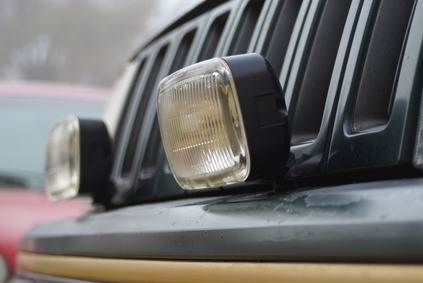
Fog lights or lamps can make driving easier and safer when rain, mist and fog cut visibility on the road. The lights are designed to emit a low, wide beam that helps to better illuminate your driving lane and make it easier for others to see you. Fog lights may be standard equipment on a vehicle or added later. Pennsylvania's state code on vehicle lighting and electrical systems (Code 175.66) describes their proper use.
Under Pennsylvania law, fog lamps may be installed on a passenger vehicle or light truck as long as they are used in addition to the vehicle's headlamps. Fog lamps may not legally be used as a substitute for headlamps.
When fog lamps are installed on the front of a vehicle, they must be spaced at least 20 inches apart, measured from the centers of the lamps. The fog lights cannot be mounted any higher than 42 inches above a level surface on which the vehicle rests. They cannot be mounted any lower than the lowest part of the chassis. Fog lamps are legal on the rear of a vehicle if they come originally installed or if they are offered as optional equipment. Fog lamps may not be mounted in front of any required lamps.
When fog lamps are used, the light emitted from the lamps should be aimed straight ahead. The beam should not be above the horizontal centerline of the lamp at a distance of 25 feet. Fog lamps are generally available with clear or amber lights.
Fog lights should be designed to operate off their own switch and work in conjunction with low beams. When high beams are being used, fog lights should be turned off.